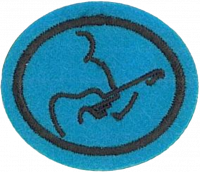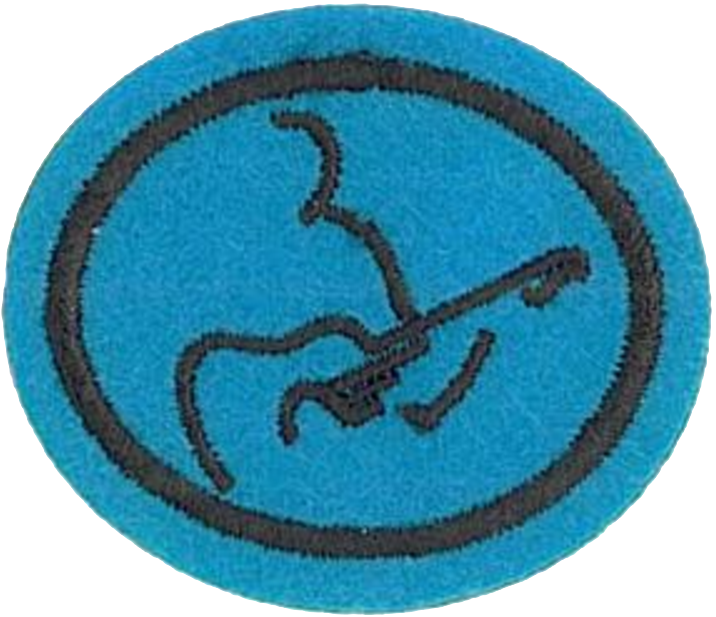Difference between revisions of "AY Honors/Guitar/Answer Key/fr"
(Created page with "<noinclude>") |
(Created page with "</noinclude> <!-- 7. Lors de l’accordage, à quelles notes sont associées les six cordes? -->") |
||
| Line 61: | Line 61: | ||
{{clear}} | {{clear}} | ||
| − | + | {{clear}} | |
| − | |||
| − | |||
| − | + | {{clear}} | |
| − | |||
| − | |||
| − | + | {{clear}} | |
| − | |||
| − | |||
| − | + | {{clear}} | |
| − | |||
| − | |||
| − | + | {{clear}} | |
| − | |||
| − | |||
| − | + | <noinclude></noinclude> | |
| − | <noinclude | ||
| − | |||
{{CloseReq}} <!-- 4 --> | {{CloseReq}} <!-- 4 --> | ||
{{ansreq|page={{#titleparts:{{PAGENAME}}|2|1}}|num=5}} | {{ansreq|page={{#titleparts:{{PAGENAME}}|2|1}}|num=5}} | ||
| − | <noinclude> | + | <noinclude></noinclude> |
| − | </noinclude> | + | <!-- 5. Présente une bonne posture pour jouer de la guitare. Explique l’importance de jouer dans cette position. --> |
| − | <!-- 5. | ||
| − | |||
| − | + | {{clear}} | |
| − | |||
| − | |||
| − | + | {{clear}} | |
| − | |||
| − | |||
| − | + | {{clear}} | |
| − | |||
| − | |||
| − | + | {{clear}} | |
| − | |||
| − | |||
| − | + | <noinclude></noinclude> | |
| − | <noinclude | ||
| − | |||
{{CloseReq}} <!-- 5 --> | {{CloseReq}} <!-- 5 --> | ||
{{ansreq|page={{#titleparts:{{PAGENAME}}|2|1}}|num=6}} | {{ansreq|page={{#titleparts:{{PAGENAME}}|2|1}}|num=6}} | ||
| − | <noinclude> | + | <noinclude></noinclude> |
| − | </noinclude> | + | <!-- 6. Donne les noms des doigtés, des cordes et des positions des mains. Fais une démonstration pour chacun. --> |
| − | <!-- 6. | ||
| − | |||
| − | + | <noinclude></noinclude> | |
| − | <noinclude | ||
| − | |||
{{CloseReq}} <!-- 6 --> | {{CloseReq}} <!-- 6 --> | ||
{{ansreq|page={{#titleparts:{{PAGENAME}}|2|1}}|num=7}} | {{ansreq|page={{#titleparts:{{PAGENAME}}|2|1}}|num=7}} | ||
| − | <noinclude> | + | <noinclude></noinclude> |
| − | </noinclude> | + | <!-- 7. Lors de l’accordage, à quelles notes sont associées les six cordes? --> |
| − | <!-- 7. | ||
| − | |||
| − | |||
| − | + | {{clear}} | |
| − | |||
| − | |||
| − | + | <noinclude></noinclude> | |
| − | <noinclude | ||
| − | |||
{{CloseReq}} <!-- 7 --> | {{CloseReq}} <!-- 7 --> | ||
{{ansreq|page={{#titleparts:{{PAGENAME}}|2|1}}|num=8}} | {{ansreq|page={{#titleparts:{{PAGENAME}}|2|1}}|num=8}} | ||
| − | <noinclude> | + | <noinclude></noinclude> |
| − | </noinclude> | + | <!-- 8. Qu’est-ce qu’un accord et comment est-il construit? Écris de mémoire la liste de tous les accords majeurs et mineurs, ainsi que les positions spécifiques des doigts. --> |
| − | <!-- 8. | ||
| − | |||
| − | + | {{clear}} | |
| − | |||
| − | |||
<div lang="en" dir="ltr" class="mw-content-ltr"> | <div lang="en" dir="ltr" class="mw-content-ltr"> | ||
Revision as of 13:47, 20 July 2022
1
2
Harmony (or counter melody) is any line that fits along with the melody to enhance and broaden the music. Usually a harmony is complementary to the melody, but that is not always the case.
Rhythm describes how the notes of the melody and any harmony exist across time. The same sequence of notes will become a different tune when the rhythm changes.
3
4
5
6
7
8
Here is the 'C' scale
C D E F G A B C
1 2 3 4 5 6 7 8
To make build the C major chord we would use C, which is the first note, E, the third note, and G, the fifth note. So if we wanted to play a C chord we need to hit these three notes. An open C chord is played like so:
e||-0--- <== This is an 'E'
B||-1--- <== This is a 'C'
G||-0--- <== This is a 'G'
D||-2--- <== This is an 'E'
A||-3--- <== This is a 'C'
E||-X--- <== This string is not played in an open C chord.
To make a C minor chord we use the same scale but the third note is flat. In the case of the C major chord, we used 'C', 'E', 'G'. To make it a minor chord we would use 'C', 'Eb', and 'G'. One way to play this chord is:
e||-3--- <== This is an 'G'
B||-4--- <== This is a 'Eb'
G||-5--- <== This is a 'C'
D||-5--- <== This is an 'G'
A||-3--- <== This is a 'C'
E||-X--- <== This string is not played in an open C chord.
It should be noted that because of the way the guitar fretboard is built there are many ways, voicings, to play the same chord.
CAGED Method
Another thing that should be noted is because of the way the fretboard is built, chord shapes can be moved. This is an easy way to find all the major and minor chords without necessarily memorizing all the chords. There are three requirements for this: 1. Know a little bit of music theory, 2. Know the basic chord shapes, and 3. Know how to play bar chords.
When you bar a chord it is like you are using a capo or moving the nut, essentially changing the pitch of that note or chord. Because of this, you can build a chord using only the root note and the basic chord shapes. For example, this is an 'E' major chord:
e||-0---
B||-0--- This is the "E major" shape
G||-1---
D||-2---
A||-2---
E||-0--- <== Using this method we only look at the root.
In this case the root note is "E". Before we start building chords we first have to see how the fretboard is organized. On the fretboard, the notes are in half step intervals. Since the root note is on the low E string in the "E" shape, if we learn the notes on the "E" string, we can use the E shape to find the chord.
This is the low E string:
E||-F-|-F#-|-G-|-G#-|-A-|-A#-|-B-|-C-|-C#-|-D-|-D#-|-E-|
0 1 2 3 4 5 6 7 8 9 10 11 12
*The numbers are the frets.
**Note that there is a half step between E and F and between B and C
So to find a chord we simply find the root note and play the shape. For example, if you wanted to play a G# major chord, you would bar on the 4th fret and play an "E" shape like so:
e||-4---
B||-4--- This is the "E major" shape
G||-5---
D||-6---
A||-6---
E||-4--- <== The root note is G#
The same can be done with the "E minor" shape. This is the "E minor" shape:
e||-0---
B||-0--- This is the "E major" shape
G||-0---
D||-2---
A||-2---
E||-0--- <== Using this method we only look at the root.
So to play a G# minor we would again bar the 4th fret and apply the "E minor" shape like so:
e||-4---
B||-4--- This is the "E minor" shape
G||-4---
D||-6---
A||-6---
E||-4--- <== The root note is G#
This can be done with all the basic Chord shapes: C, A, G, E, and D. This is one of the reasons it is called the CAGED method. This is however a very broad topic and guitarist are encourage to find out more on their own or through a tutor.
9
10
A flat note is represented by a 'b'. When a note is flat it goes half a pitch down.
A sharp note is represented by a '#'. When a note is sharp it goes half a pitch up.
The guitar is organized in half step intervals so if we wanted to play a G# on the low E string, we would go to G which is on the third fret. Then we would need to go up one fret, to the 4th fret, to get to G#.
Similarly, since G is on 3rd fret on the low E string, Gb is on the 2nd fret of the low E string.
11
Nylon: Nylon strings are made of synthetic materials. If you buy nylon string they usually come in different tensions such as low tension strings and normal tension strings. They are usually easier to press than steel strings and they are also thicker. Because of they they hurt less when people are beginning to play. The notes are warmer when they are played, especially the treble notes. The bass notes are also fuller on nylon strings. They are often used in classical guitar, flamenco, and jazz. Nylon strings also allow for more expression and nuances than steel strings.
Steel: Steel strings can be made using many different materials. Some of the most common are steel and brass. When you buy steel strings they come in gauges rather then tensions. For example, you can get a set where the high E string is 0.09mm or 0.10 mm. The bigger the gauge the better the sound. However, increasing the gauge also makes it harder to play. While nylon strings are warm, steel strings tend to be very bright, and have less pronounced bass notes. This makes them good for most styles of music, and thus they are more versatile than nylon strings.
12
13
13a
13b
13c
13d
14


